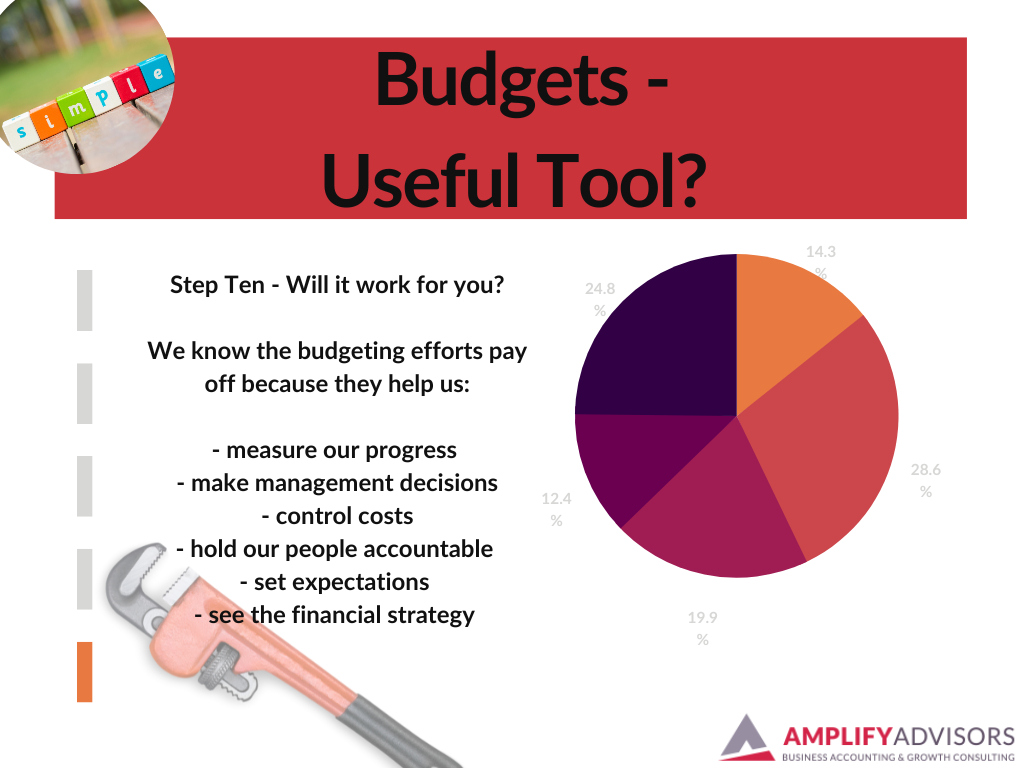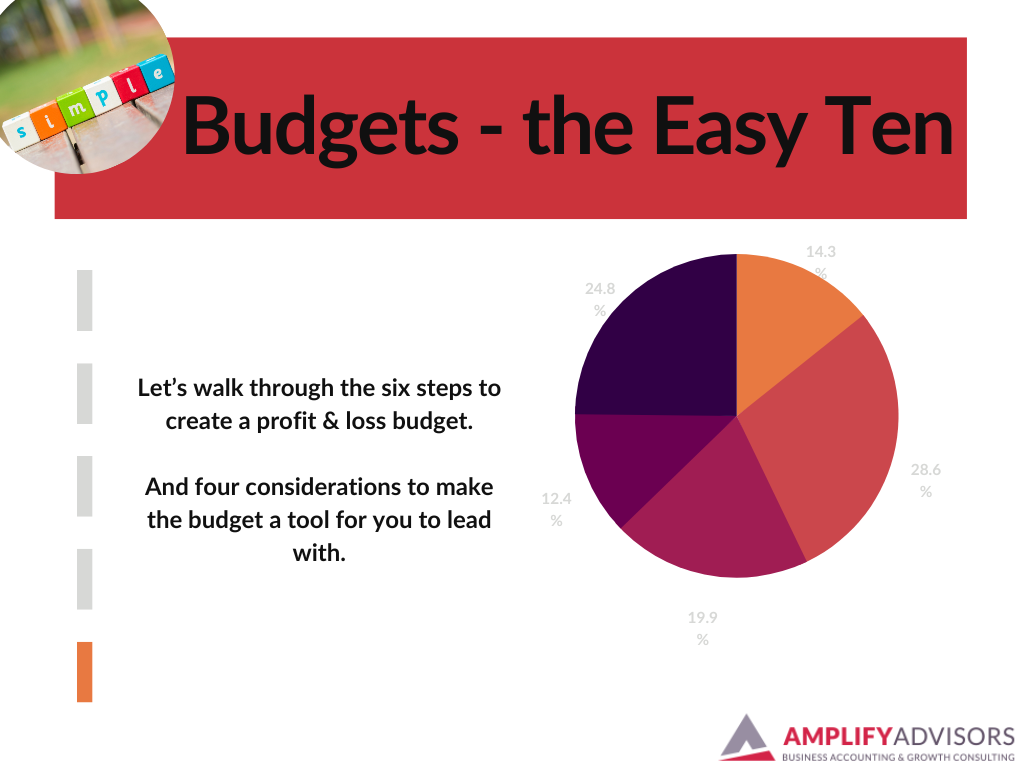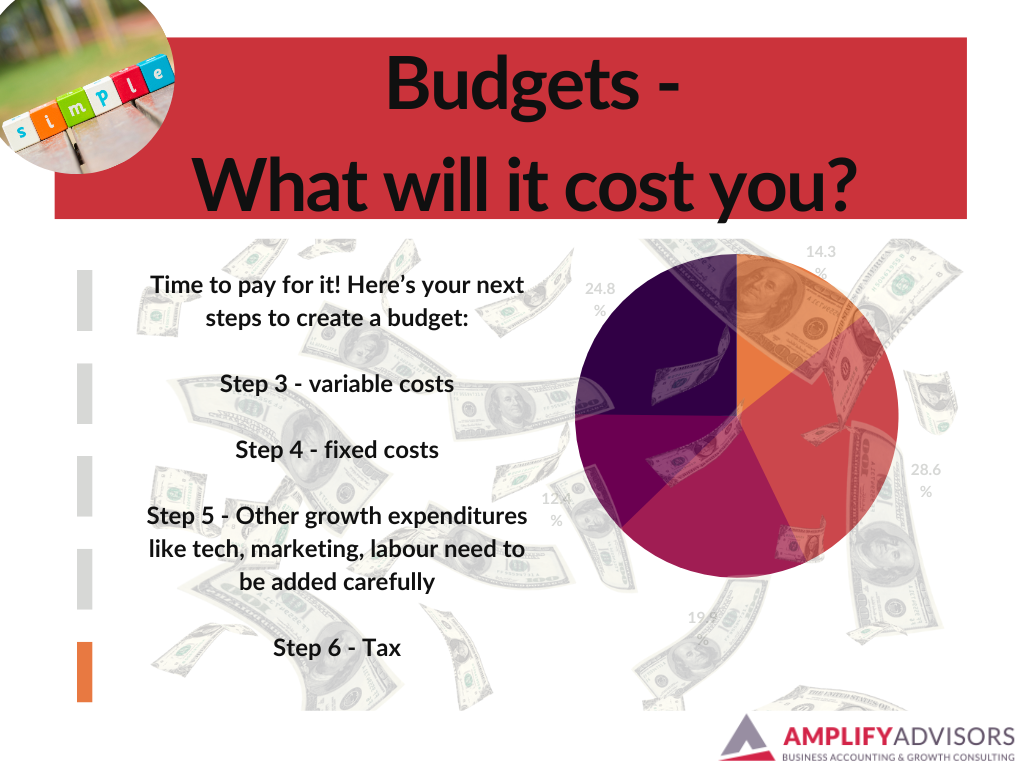Budgeting can be a daunting task!
You look at putting best practices, like budgeting, into your business and it can feel like starting at the bottom of a mountain with a lot to climb and tackle.
We know the budgeting efforts pay off because they help us:
– measure our progress.
– make management decisions.
– control costs.
– hold our people accountable.
– set expectations.
– see the financial strategy.
But sometimes, these benefits can seem far away. After all, people are busy.
Change is tough on teams, and the process takes time, that we don’t feel we have.
Let’s look at simplifying what can feel like a complex goal.
Here’s how to get a budget going:
1. Start with last year’s actual – history tends to repeat itself. The easiest way to gain momentum is to use the data you have.
It encompasses seasonality, annual one-time costs, and other variables that are driving your business.
2. Revenue and sales projections: Update your expected income for the upcoming year, based on your strategy and market trends. Estimate what you will see for sales of your new initiatives (new products, services, regions, etc.).
Many businesses include a growth percentage for the growth on current sales lines, which can reflect new customers of existing sales lines or price increases.
3. Variable costs: Update your variable costs (inventory, marketing, supplies) to determine your expenses. Often, variable costs are a revenue percentage.
Rates are updated based on strategy, business partnering, pricing, market trends, and new initiatives.
4. Fixed costs: Identify all your fixed expenses (rent, utilities, salaries) to determine your total expenses. Ensure that expenditures for new initiatives are factored in.
Now that you have a solid start on an operational budget that factors in the past trends and has been updated for what’s new, you are well on your way!
Next up, review and ensure you’ve considered what’s coming up in these areas:
5. What will it cost to meet your ambitious sales expectations?
– Marketing and advertising: Allocate a budget for marketing and advertising efforts to promote your products or services.
– Technology and equipment: Consider any necessary investments in technology, equipment, or software to improve your business operations and support the team.
– Employee wages and benefits: Speaking of the team, what needs to be added to ensure you can attract and retain talented staff? Plan for new hires, updated employee salaries, benefits, and any potential wage increases.
– Contingency plan: Create a contingency plan in case of unforeseen circumstances or changes in the market that may impact your budget.
Add some emergency funds to your budget.
The profit and loss are almost there!
Don’t forget to pay the government, though:
6. Taxes and licenses: Account for all applicable taxes, licenses, and permits required for your business operations.
That’s it! You’ve got a plan quantified, which will help you throughout the year.
Let’s check in on this tool and make sure we are ready for a few other things to come that don’t get captured on a profit and loss budget:
7. Cash flow management: Ensure you have enough to cover your expenses and maintain a positive cash flow throughout the year.
Convert the budget into a cashflow forecast that considers when you’ll collect, when deposits are due, and all the other timing differences which will strain or impact your bank. If you see strains you can’t fund or don’t work for your business, go back and adjust the budget and mitigate the risks.
8. Debt and loan repayments: Consider any outstanding debts or loans and allocate funds for timely repayments. If the cash flow impacts your initial plans, make the necessary updates.
9. Strategy: Does the final budget reflect your goals? Take an extensive picture, look at the final draft and make sure it’s aligned with what you are aiming for.
10. Expectations: Is the budget set up to be a tool for your team? Can you use it to run your business?
Remember, budgets are prepared so that we can lead.
Management decisions, key performance indicators, cost controls and accountability are just some reasonable expectations from the time you’ve put in.
A budget season is often many weeks, sometimes even crossing multiple months.
It involves a lot of people.
The time and resources are anything but simple, but we hope these easy ten help to simplify the situation.
Read more on budget methodologies, approaches and things to consider.
Get the latest on business leadership delivered to your inbox every week!





Leave A Comment
You must be logged in to post a comment.